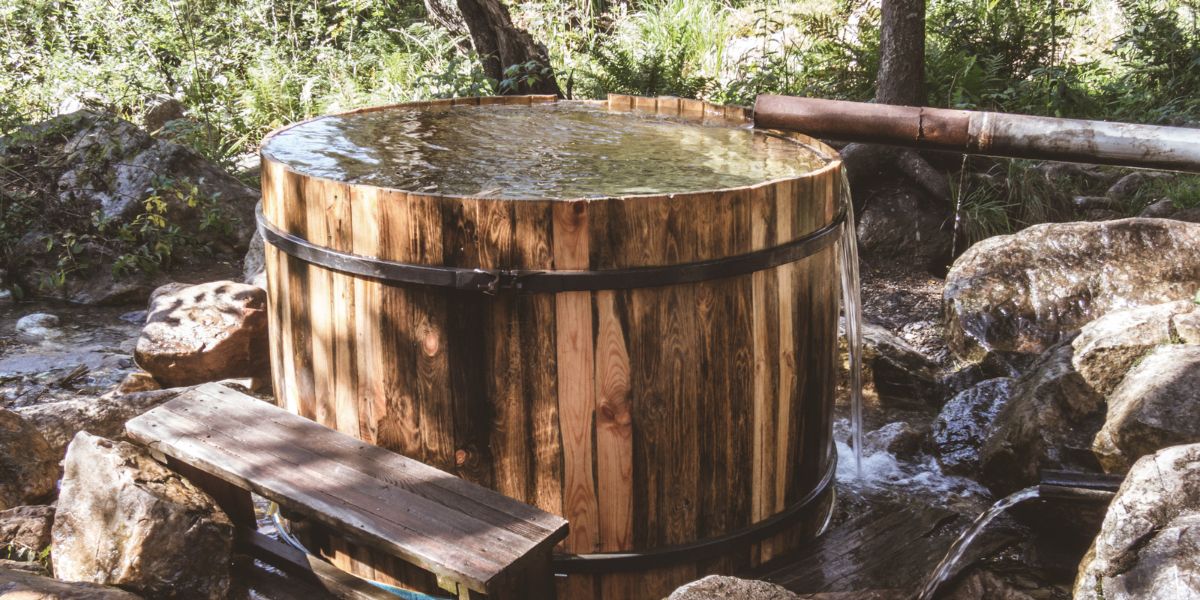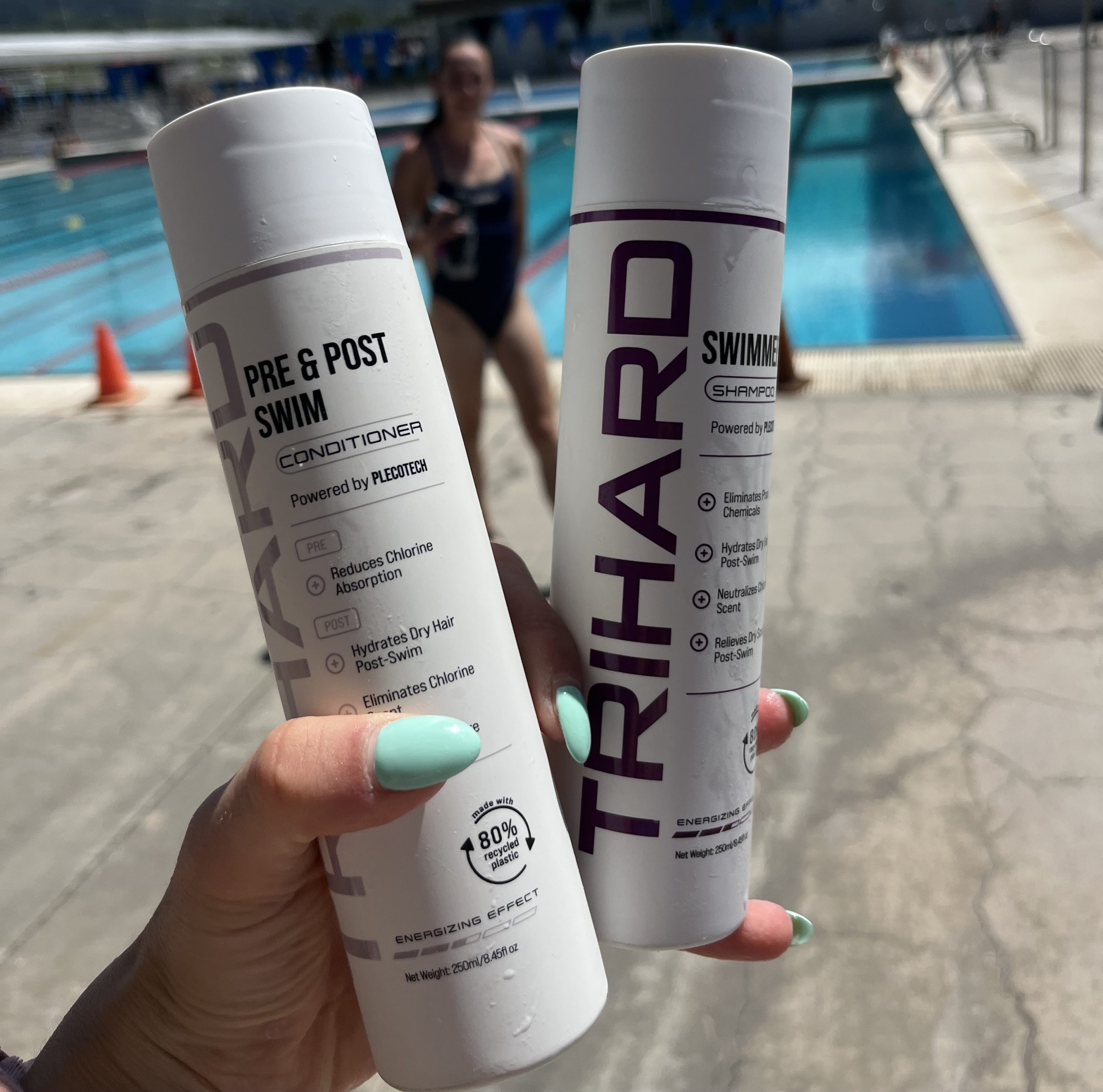February 6, 2024
How to Have a More Chill Menopause

Deliberate cold exposure through swimming, plunging, or showering may ease symptoms and improve mood.
By Selene Yeager
We live in a world where it can be exceedingly difficult to chill out. That’s doubly true for menopausal women, who can have a harder time balancing their autonomic nervous system activity as their hormones fluctuate and decline. We can find ourselves spending too much time in a stressed-out, sympathetic system “fight or flight” state and not enough in a chill, parasympathetic system “rest and digest” state.
Unchecked, this increase in sympathetic nervous system activity can not only wreck your mood, but also be harmful for your health as it paves the way for elevated blood pressure and more.
Mindfulness, breathing exercises, and cognitive behavioral therapy can all help significantly lower stress. You can also try literally chilling yourself out through deliberate cold exposure through a cold bath or swim, which, while certainly a stress in and of itself, research indicates can activate the parasympathetic nervous system through stimulation of the vagus nerve in the neck, and overtime can cause a shift toward more parasympathetic activity.
Cold Water Swimming May Improve Menopause Symptoms
Though cold plunging may feel trendy right now with every other podcaster talking about their plunge tub, using cold water immersion for health reasons dates back to at least 3500 BC in medical writings and was popular among the Ancient Greeks.
Most recently, a study of more than 1100 women (785 of them in menopause) was published last month showing that menopausal women found that cold water swimming helped relieve a host of their symptoms, including lessened anxiety (47%), improved mood swings (35%), elevated low mood (31%), and improved hot flashes (30 percent). The majority of them (63%) reported swimming specifically to relieve their symptoms.
“Cold water has previously been found to improve mood and reduce stress in outdoor swimmers, and ice baths have long been used to aid athletes’ muscle repair and recovery,” said senior author, professor Joyce Harper in a press release. “The majority of women swim to relieve symptoms such as anxiety, mood swings and hot flushes. They felt that their symptoms were helped by the physical and mental effects of the cold water, which was more pronounced when it was colder.”
These sentiments echo those of physiologist and sleep expert Nerina Ramlakhan, PhD, who shared her own menopause transformation once she started swimming in the brisk waters of the river Thames each morning.
“I have some neoprene socks and some neoprene gloves on my fingers, and I swim throughout the year,” she said during episode 118 of Hit Play Not Pause. “Once I started, I discovered my mood was so much better. And that my body didn’t ache, which was happening as I’m going through menopause. My joints felt fantastic. I felt amazingly sharp afterwards. And in the afternoon, I wouldn’t have that slump, I would just be feeling great.”
Done regularly, cold water immersion also appears to reduce insulin resistance and improve insulin sensitivity, which helps improve cardiometabolic health and is great for menopausal women, who tend to become more carbohydrate sensitive and insulin resistant.
Research shows that cold water immersion can also trigger a prolonged, significant release in dopamine, which can contribute to feelings of motivation, focus, alertness, and happiness. Cold-water swimmers report increased feelings of health and wellbeing. Research is ongoing and we need more high-quality studies to verify these effects, but the evidence for mental and physical benefits is compelling.
Submerge Smartly
If you decide to take a cold dip, be smart, especially if you’re swimming. Cold water immersion comes with well-established risks. Cold plunging can cause “cold shock”, which can cause your heart rate and blood pressure to spike and leave you gasping until you settle. That can cause you to pass out, which is very bad news in water.
A post on Polar Plunges, where groups of people run into ice-cold water, often for a cause, by the American Heart Association cautions against cold plunging for anyone with a history of or known cardiac condition.
Think of cold-water immersion as strong medicine. It’s not for everyone, and a little goes a long way. There are no firm, scientifically established protocols, but a good place to start is with submerging up to your shoulders/neck for several seconds, working up to 30 seconds to a minute in water that is cold, but not frigid, somewhere around 50 to 60 degrees F (10 to 15 C). As you acclimate, you can work your way into longer/colder dips/swims if you choose to.
Never cold swim alone. Have warm clothes and a steamy drink ready when you’re done. Be prepared for a phenomenon called “after drop” when you get out of the water, which is when your blood vessels dilate and the chilled blood from your extremities heads back to your core, dropping your body temperature even more and making you feel even colder.
If cold plunging isn’t your jam, but you’d like to try some deliberate cold exposure, research shows that you may be able to get similar benefits by turning down the hot water in the shower for the last 30 to 90 seconds to give yourself a jolt of cold exposure.


 Outspoken Women in Triathlon Summit Returns Bigger than Ever
Outspoken Women in Triathlon Summit Returns Bigger than Ever  Driving the Lamborghini: Productivity and the Power of Paper
Driving the Lamborghini: Productivity and the Power of Paper  5 take aways from the Compete Sports Diversity Summit
5 take aways from the Compete Sports Diversity Summit  Simple Tips to Hone Your Bike Handling Skills
Simple Tips to Hone Your Bike Handling Skills 


